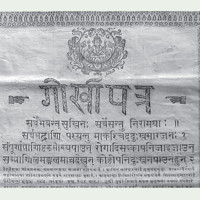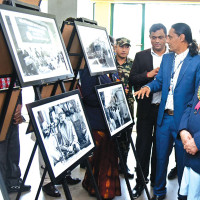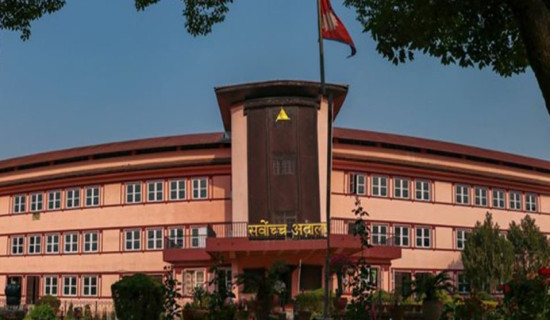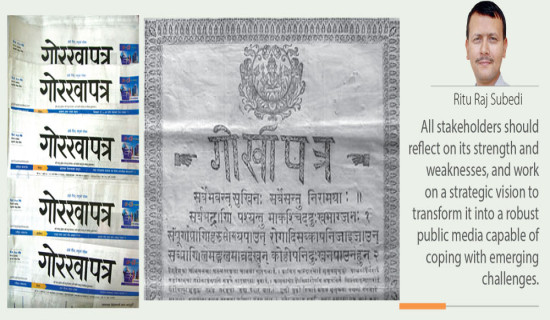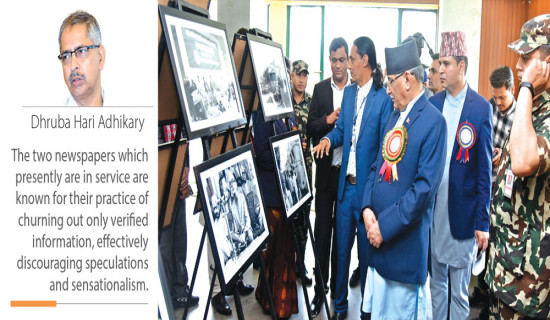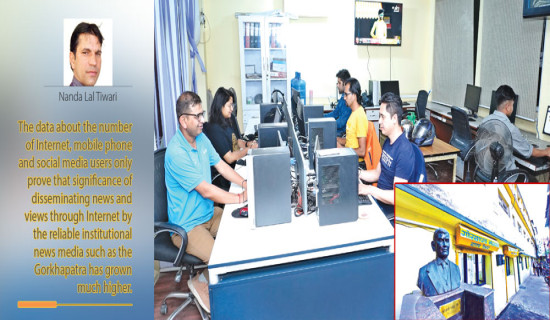- Tuesday, 7 May 2024
Chronicle Of Nepali Music
Writing a book on a particular subject truly honors that subject. Unfortunately, experts may not always take the opportunity to share their expertise. This lack of attention can lead to missed chances and, ultimately, significant losses for the field, society, nation, and world.
A recent addition to the world of music is a book titled 'Nepali Sangeet Darbar: From Ancient Times to Modern Era', ('Nepali Sangeet Darbar: Adikaldekhi Adhunik kalsamma'), authored by Prof. Dr. Dhruveshchandra Regmi.
Dr. Regmi, coming from a long line of musicians, is a skilled Sitar teacher at Tribhuvan University. His passion and dedication lie solely in the world of music, evident through his classical music group 'Sukarma' that performs both locally and internationally.
The release of this book fills a gap in the Nepali literary scene, particularly in the realm of music. Dr. Regmi's work delves into the rich history of Nepali music, uncovering both known and lesser-known aspects through meticulous research. The book, supported by forewords from music expert Ramsharan Darnal and professor Abhi Subedi, consists of 10 chapters that explore various music genres.
The first chapter of the book delves into the essence of music as a profound art form, tracing its roots back to Nepal's ancient civilization.
It highlights Nepal's significance as the birthplace of Eastern classical music, distinguishing it from other nations mentioned in the Bharatanatyasastra.
The chapter also outlines the evolution of music from royal courts to everyday urban and rural life, shedding light on its cultural importance.
The second chapter explores the connection between music and religion, gods and goddesses, and offers insights into classical Vedic contexts of music. It also touches upon music during the Buddhist period.
Chapter three delves into the music industry in Nepal and the role of caste in this field.
It discusses ancient beliefs about music, ideas about music professions, and the social class involved in music careers. In this chapter, which caste people made music a profession or a business? What was their condition?
How did society view them? How could they sustain that profession? etc. can be learned from various references.
Chapter four gives a brief overview of popular classical songs in Nepal during various time periods, as well as the types of folk songs, religious songs, folk dances, and religious dances that were enjoyed.
In chapter five, various musical instruments used in classical, folk, and traditional music are discussed.
It also covers the use of music in traditional rituals and in the military. This book is a good collection for the study of instruments. It explains the author's background and interest. In this section, readers find information about which instrument is popular on which occasion.
Various genres of music are also included in festivals, mourning, grief, etc.
The lichchavi period's music is discussed in the sixth chapter. It refers to music-loving lichchavi kings, famous instruments of the time, and the preservation and promotion of music.
This chapter includes information about the traditions of theatre, dance, and drama, in addition to the discussion of seasonal music. In the seventh chapter, readers will find information about Nepali music during the Malla period. It addresses the king's love of music, the performance of dance, and drama.
Similarly, in this chapter, topics such as information on music used in religious ceremonies and references to music used in artworks are also included.
Chapter eight sheds light on the state of music in Nepal during the first half of the Shah period. The following nine chapters detail the condition of music during the Rana period in Nepal.
Chapter ten focuses on the state of music in modern Nepal, post-2007, and offers suggestions on how to protect and promote music, art, and culture in the future.
Renowned music expert Prof. Dr. Dhrurveshchandra Regmi's book provides a comprehensive overview of Nepali music genres in a clear and authoritative manner, making it a valuable resource for those interested in further study.
The author acknowledges the need for additional research on the contributions of the masses to the development of Nepali music, as compared to the contributions of the ruling class.
The photos and appendices in the book have greatly enhanced its credibility and authenticity.
The book, written in a clear and engaging style, makes a significant contribution to the field of Nepali music and is accessible to readers from various backgrounds.
This book has gathered a lot of material for the study of the Nepali music sector and has informed the general public and subject experts that there is still a lot of work to be done for the study and research of this field.
Prof. Dr. Dhruveshchandra Regmi, the author, is deserving of congratulations for his thorough research. Best wishes to Regmi for his future studies in Nepali music.
Bhupendra Khadka of Bookhill Publication Pvt. Ltd. and the publication itself are deserving of thanks for bringing this important book to readers. The cover of 'Nepali Sangeet Darbar: From Ancient Times to Modern Era', ('Nepali Sangeet Darbar: Adikaldekhi Adhunik kalsamma), published in hardcover, was designed by artist Sachin Yagol Shrestha. The book, consisting of 226 pages, is priced at Rs 999 and was released in Asoj 2080.
(The author is a poet and critic.)




